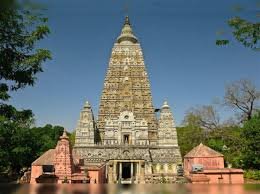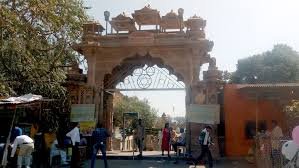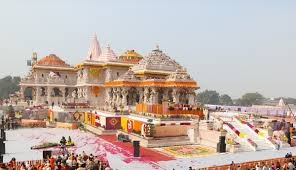The Mahabodhi Temple in Bodh Gaya, Bihar, is one of the most revered spiritual sites in the world. It marks the very place where Prince Siddhartha Gautama attained enlightenment and became Buddha. As a UNESCO World Heritage Site, the temple holds immense religious, historical, and architectural significance. Pilgrims and travelers from around the world visit this sacred place to seek wisdom, peace, and divine blessings.
A Journey Through Time: The History of Mahabodhi Temple
To truly appreciate the Mahabodhi Temple, it is essential to understand its historical roots. The temple’s origins date back to the 3rd century BCE when the great Mauryan Emperor Ashoka, a devout follower of Buddhism, erected a shrine at the site of Buddha’s enlightenment. Over the centuries, the temple underwent several renovations and expansions, reflecting the devotion of various dynasties.
During the Gupta period (4th-6th century CE), the temple complex received architectural enhancements, including its iconic towering spire. Despite facing invasions and neglect, the temple survived and was eventually restored in the 19th century, thanks to efforts by the British and Burmese monks. Today, the Mahabodhi Temple stands as a beacon of Buddhist faith and a center of spiritual learning.
Architectural Marvel: A Symbol of Spiritual Grandeur
The Mahabodhi Temple is a masterpiece of Indian architecture, blending ancient Indian and Buddhist styles. The temple complex features:
1. The Grand Temple Tower
- The central temple tower, standing at about 55 meters (180 feet), is an architectural wonder.
- Built using bricks without mortar, this pyramid-shaped structure is adorned with intricate carvings and motifs.
- The top of the tower is crowned with a golden finial, adding to its grandeur.
2. The Sanctum and the Golden Buddha Idol
- Inside the temple, the sanctum houses a magnificent golden statue of Lord Buddha in a meditative pose.
- The statue faces east, symbolizing the direction in which Buddha attained enlightenment.
- The serene expression of the idol radiates peace, inspiring countless visitors.
3. The Sacred Bodhi Tree
- Perhaps the most significant part of the temple complex is the Bodhi Tree.
- It is believed to be a direct descendant of the original tree under which Gautama Buddha attained enlightenment.
- Pilgrims meditate under its shade, seeking spiritual awakening and inner peace.
4. The Vajrasana – The Diamond Throne
- Directly under the Bodhi Tree lies the Vajrasana, or the Diamond Throne, built by Emperor Ashoka.
- It marks the exact spot where Buddha sat in meditation for seven weeks.
- This sacred seat is one of the most revered parts of the temple complex.
5. The Beautifully Decorated Surroundings
- The temple complex is surrounded by intricately carved stone railings, some dating back to the 2nd century BCE.
- Numerous stupas, prayer halls, and meditation spots enhance the spiritual ambiance.
- The Lotus Pond, where Buddha is believed to have bathed, adds to the temple’s divine charm.
Spiritual Significance: A Center of Buddhist Devotion
The Mahabodhi Temple is not just a monument; it is a living spiritual center where Buddhist monks, scholars, and seekers gather to practice meditation and prayers.
1. Meditation and Chanting
- Pilgrims and monks sit in deep meditation under the Bodhi Tree, following Buddha’s path to enlightenment.
- The air resonates with chanting of Buddhist scriptures, creating a profoundly tranquil atmosphere.
2. Rituals and Offerings
- Devotees offer candles, flowers, and incense as an expression of devotion.
- Many perform pradakshina (circumambulation) around the temple, seeking spiritual blessings.
3. Celebrations and Festivals
The temple witnesses grand celebrations, especially during:
- Buddha Purnima – The most significant festival, marking the birth, enlightenment, and nirvana of Buddha.
- Dhamma Chakra Pravartan Day – Celebrated to honor the first sermon of Buddha.
- Kathina Ceremony – A festival of offering robes to monks, symbolizing generosity.
A Global Pilgrimage Destination: Why You Should Visit
The Mahabodhi Temple attracts people from diverse backgrounds, not just Buddhists but also Hindus, Jains, spiritual seekers, and history enthusiasts. Here’s why a visit to this temple is a must:
1. Experience Inner Peace and Meditation
- Whether you are a Buddhist or not, meditating under the Bodhi Tree is a soul-soothing experience.
- The energy of the place fosters clarity, mindfulness, and inner awakening.
2. Witness Ancient Indian Art and Architecture
- The temple’s detailed carvings, sculptures, and ancient structures showcase India’s rich architectural heritage.
- It is a visual delight for history lovers, archaeologists, and art enthusiasts.
3. Be a Part of a Spiritual Legacy
- The temple stands as a symbol of enlightenment, reminding us of the transformative power of knowledge and self-discovery.
- Visiting this sacred site connects one to thousands of years of spiritual tradition.
Exploring Bodh Gaya: Beyond the Mahabodhi Temple
While the Mahabodhi Temple is the main attraction, Bodh Gaya offers several other notable places:
1. Great Buddha Statue
- A massive 80-foot-tall Buddha statue made of red granite and sandstone.
2. Thai Monastery
- Showcasing exquisite Thai-style architecture with golden roofs and beautiful sculptures.
3. Muchalinda Lake
- Said to be the spot where a serpent protected Buddha during his meditation.
4. Tibetan Monasteries
- Home to vibrant Tibetan Buddhist culture, prayer wheels, and colorful murals.
Best Time to Visit Mahabodhi Temple
- The ideal time to visit is October to March, when the weather is pleasant.
- If you want to experience Buddhist festivals, visiting during Buddha Purnima in April-May is recommended.
- The temple is open from 5:00 AM to 9:00 PM daily.
How to Reach Mahabodhi Temple
- By Air: The nearest airport is Gaya International Airport (12 km away).
- By Train: The Gaya Railway Station (16 km away) is well connected to major Indian cities.
- By Road: Bodh Gaya has good road connectivity with Patna, Gaya, and other parts of Bihar.
Conclusion: A Journey to Enlightenment
The Mahabodhi Temple in Bodh Gaya is not just a historical site; it is a spiritual sanctuary where enlightenment was born. From its sacred Bodhi Tree and awe-inspiring architecture to its tranquil ambiance and rich heritage, the temple continues to inspire millions worldwide.
If you seek peace, wisdom, and a deeper connection with yourself, visiting Mahabodhi Temple will be an experience like no other. Let the sacred vibrations of this holy place guide you on a journey of self-discovery and enlightenment.





